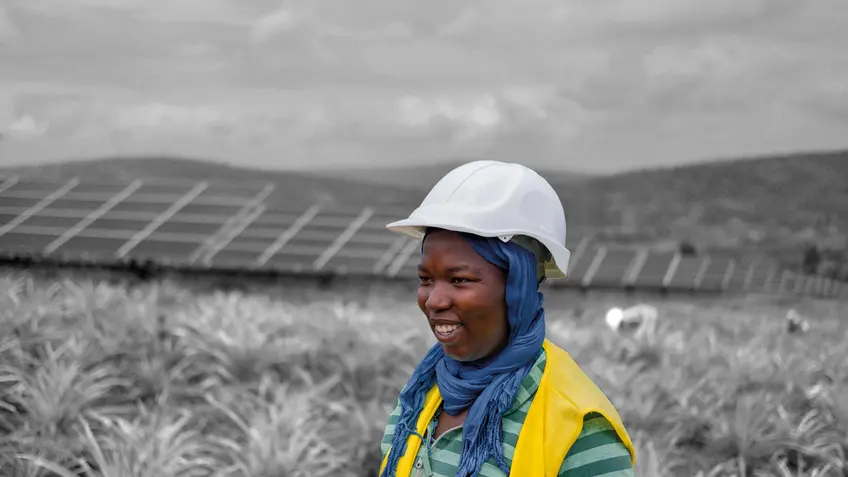Partnership in Action: Two Years On
Two years ago, over 40 countries and international institutions dedicated to tackling climate change came together to form the NDC Partnership. They hoped that by working together, the world could achieve the ambitious mitigation and adaptation goals in countries’ Nationally Determined Contributions (NDCs) under the Paris Agreement. They committed to respond quickly to countries’ urgent needs for technical assistance, capacity-building, and financial support to empower countries to jointly meet their climate and sustainable development targets.
Now, the Partnership comprises over 100 countries, international institutions, and non-state actors. Every day, members of the Partnership collaborate to reduce emissions, increase resilience, provide finance and technical support, and learn from each other to scale climate action.
We are already seeing impressive progress by a number of countries towards meeting the goals they established in the first round of their NDCs. This includes progress to mainstream NDCs into government policies and development plans, leverage domestic and international finance, and raise ambition to achieve the ultimate objective of the Paris Agreement. Encouragingly, NDCs are proving to be effective tools to drive climate action forward.
Partnership in Action 2018: Two Years On is a snapshot of the Partnership’s progress in 2018 with examples from several country and institutional members highlighting how they are overcoming obstacles to meet their mitigation and adaptation goals. The Partnership in Action report focuses on four key factors necessary to turn NDC commitments into action on the ground:
- Mobilizing climate action across government and society
- Integrating development and climate action
- Financing on-the-ground climate action; and
- Raising climate ambition
Below are some of the key lessons learned, and a few noteworthy examples.
One: Countries are integrating NDCs into policy, planning, and budgets.
For countries to successfully implement their climate goals, they need a whole-of-society approach, in which climate action is mainstreamed into all relevant decisions across national and local governments. As the Partnership’s members have demonstrated, mainstreaming efforts take a variety of forms, but all incorporate diverse stakeholders within government, various sectors, and society. For example, in 2018, Mongolia brought together a consultation of 200 stakeholders across government, business, and civil society that resulted in a comprehensive climate plan with wide buy-in. In an innovative approach, Kenya has integrated its NDC targets into a National Climate Change Action Plan, which will be executed alongside the country’s national development agenda.
Two: Countries are linking climate action and sustainable development
One of the biggest priorities for NDC Partnership members is leveraging NDCs to achieve broader sustainable development priorities, particularly in their growth strategies and sectoral roadmaps. São Tomé and Príncipe developed a multi-sector investment roadmap for adaptation, including projects in reforestation, agroforestry, infrastructure, and renewable energy. In addition, countries are seizing the opportunity to align climate plans with the UN Sustainable Development Goals (SDGs). Peru, the Republic of the Marshall Islands, and Uganda are pioneering strategies for gender-responsive NDC implementation, working towards SDG 5 (gender equality) and more inclusive societies. As these cases show, linking climate action to social and economic priorities strengthens cross-government ownership of NDCs and maximizes the use of resources.
Three: Domestic and international climate finance is flowing, though still not at the scale needed
As developing country members turn their NDCs into investment plans, they are leveraging domestic and international finance. Saint Lucia and Morocco, for instance, are mobilizing domestic finance, and Uganda is developing budget-tracking systems. Namibia is securing wide-ranging public and private investment for bankable projects and attracting support from local and regional banks. Meanwhile, NDC Partnership developed country members are aligning spending with climate initiatives and needs outlined in requests for support by developing countries, and its institutional members are setting up coordinated NDC support programs to meet these needs.
Four: Countries are raising ambition ahead of Paris Agreement requirements
The Paris Agreement encourages countries to commit to increasingly ambitious NDCs every five years, beginning in 2020. However, as countries work with the NDC Partnership to implement their current NDCs, they lay the groundwork to deliver climate action beyond that in their initial NDCs. Already, members are committing to strengthened mitigation targets in their NDC implementation plans, accelerating target timelines, and broadening NDCs to include additional sectors. Honduras, the first country to finalize its plan, announced a stronger mitigation target and will present enhanced climate commitments at COP 25. Uganda, in working with NDC Partnership members to turn its economic and climate ambitions into action, aims to implement some 2030 climate goals by 2020.
But the Partnership’s hardest work lies ahead
When it comes to climate action, not enough is being done, and time is against us. Members of the NDC Partnership have made incredible progress in 2018— developing whole-of-society approaches to driving climate and sustainable development, contributing and accessing climate finance, and beginning to raise ambition. We hope that the coming year will bring even more cooperation, more finance, and solidified ambition in the form of updated NDCs. Now that the groundwork has been laid in many countries through institutional arrangements, planning, and finance, 2019 will be a critical year to turn climate plans into transformative action on the ground. This will only be possible if we bring together leading countries, expert institutions, and investors in innovative and ambitious ways. This is our goal as a Partnership.
This blog was written by Robert Bradley, Director of Knowledge and Learning, and Talia Calnek-Sugin, Knowledge and Learning Coordinator.
